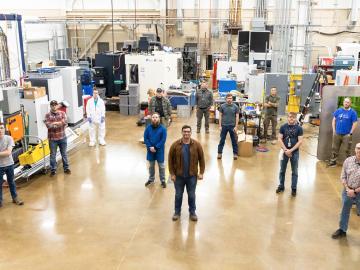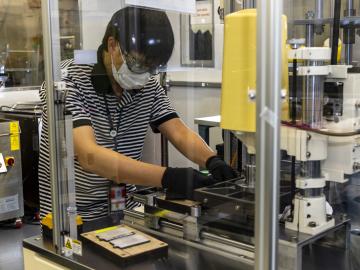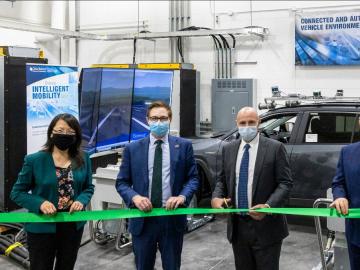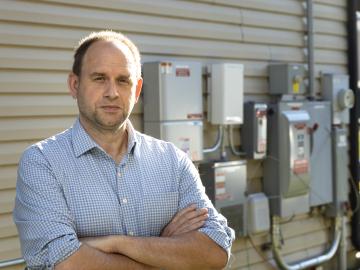
Filter News
Area of Research
- (-) Energy Science (86)
- (-) Neutron Science (15)
- (-) Quantum information Science (3)
- Advanced Manufacturing (2)
- Biology and Environment (28)
- Computer Science (2)
- Fusion and Fission (8)
- Isotope Development and Production (1)
- Isotopes (24)
- Materials (61)
- Materials for Computing (9)
- National Security (18)
- Nuclear Science and Technology (8)
- Supercomputing (51)
News Type
News Topics
- (-) Clean Water (6)
- (-) Cybersecurity (10)
- (-) Energy Storage (47)
- (-) Frontier (2)
- (-) Isotopes (1)
- (-) Microscopy (8)
- (-) Space Exploration (3)
- (-) Transportation (35)
- 3-D Printing/Advanced Manufacturing (55)
- Advanced Reactors (5)
- Artificial Intelligence (11)
- Big Data (3)
- Bioenergy (28)
- Biology (16)
- Biomedical (17)
- Biotechnology (4)
- Buildings (19)
- Chemical Sciences (15)
- Composites (8)
- Computer Science (28)
- Coronavirus (19)
- Critical Materials (4)
- Environment (35)
- Exascale Computing (2)
- Fossil Energy (3)
- Fusion (2)
- Grid (22)
- High-Performance Computing (6)
- Hydropower (1)
- Machine Learning (7)
- Materials (30)
- Materials Science (34)
- Mathematics (2)
- Mercury (2)
- Microelectronics (1)
- Molten Salt (1)
- Nanotechnology (15)
- National Security (7)
- Neutron Science (95)
- Nuclear Energy (7)
- Partnerships (12)
- Physics (9)
- Polymers (7)
- Quantum Computing (1)
- Quantum Science (10)
- Security (8)
- Simulation (2)
- Summit (9)
Media Contacts

As ORNL’s fuel properties technical lead for the U.S. Department of Energy’s Co-Optimization of Fuel and Engines, or Co-Optima, initiative, Jim Szybist has been on a quest for the past few years to identify the most significant indicators for predicting how a fuel will perform in engines designed for light-duty vehicles such as passenger cars and pickup trucks.

The University of Texas at San Antonio (UTSA) has formally launched the Cybersecurity Manufacturing Innovation Institute (CyManII), a $111 million public-private partnership.

Soteria Battery Innovation Group has exclusively licensed and optioned a technology developed by Oak Ridge National Laboratory designed to eliminate thermal runaway in lithium ion batteries due to mechanical damage.

Four research teams from the Department of Energy’s Oak Ridge National Laboratory and their technologies have received 2020 R&D 100 Awards.

ORNL and Department of Energy officials dedicated the launch of two clean energy research initiatives that focus on the recycling and recovery of advanced manufacturing materials and on connected and

Scientists at Oak Ridge National Laboratory used new techniques to create a composite that increases the electrical current capacity of copper wires, providing a new material that can be scaled for use in ultra-efficient, power-dense electric vehicle traction motors.

Scientists at ORNL and the University of Nebraska have developed an easier way to generate electrons for nanoscale imaging and sensing, providing a useful new tool for material science, bioimaging and fundamental quantum research.

Oak Ridge National Laboratory researchers have developed artificial intelligence software for powder bed 3D printers that assesses the quality of parts in real time, without the need for expensive characterization equipment.

Joe Hagerman, ORNL research lead for buildings integration and controls, understands the impact building technology innovations can have during times of crisis. Over a decade ago, he found himself in the middle of one of the most devastating natural disasters of the century, Hurricane Katrina.

Five researchers at the Department of Energy’s Oak Ridge National Laboratory have been named ORNL Corporate Fellows in recognition of significant career accomplishments and continued leadership in their scientific fields.


